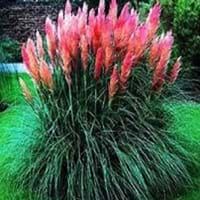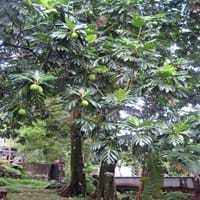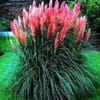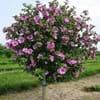Life Span
Perennial
Perennial
Origin
South America, Argentina
Southeastern Asia, Melanesia, Micronesia
Types
Not Available
Jackfruit, Breadnut, Figs
Habitat
All sorts of environments
Lowland evergreen rainforest, Riverine swamp forest
USDA Hardiness Zone
7-11
10-15
AHS Heat Zone
12 - 7
12-9
Sunset Zone
H1, 3a, 3b, 4, 5, 6, 7, 8, 9, 10, 11, 12, 13, 14, 15, 16, 17, 18, 19, 20, 21, 22, 23, 24
H2
Habit
Arching/Fountain-shaped
Oval or Rounded
Flower Color
Pink
Yellow green
Flower Color Modifier
Bicolor
Bicolor
Fruit Color
Non Fruiting Plant
Yellow, Green, Yellow green, Brown
Leaf Color in Spring
Green, Gray Green
Dark Green
Leaf Color in Summer
Light Green
Dark Green
Leaf Color in Fall
Green, Gray Green
Dark Green
Leaf Color in Winter
Green, Gray Green
Light Green
Leaf Shape
long with sharp edges
Irregular
Plant Season
Spring, Summer, Fall, Winter
Spring, Summer, Fall, Winter
Sunlight
Full Sun, Partial Sun, Partial shade
Full Sun, Partial Sun
Type of Soil
Loam, Sand
Loam, Sand
The pH of Soil
Acidic, Neutral, Alkaline
Acidic, Neutral, Alkaline
Soil Drainage
Well drained
Average
Bloom Time
Early Summer, Summer, Late Summer, Early Fall
Indeterminate
Tolerances
Pollution, Salt, Soil Compaction
Drought
Where to Plant?
Ground
Ground
How to Plant?
Divison, Seedlings, Transplanting
Grafting, Rooted stem cutting, Seedlings
Plant Maintenance
Medium
Medium
Watering Requirements
Do not water excessively, Keep the ground moist but not water-logged
Average Water Needs, Never Over-water, occasional watering once established, Water daily during growing season, Water Deeply
In Summer
Lots of watering
Lots of watering
In Spring
Moderate
Moderate
In Winter
Average Water
Average Water
Soil pH
Acidic, Neutral, Alkaline
Acidic, Neutral, Alkaline
Soil Type
Loam, Sand
Loam, Sand
Soil Drainage Capacity
Well drained
Average
Sun Exposure
Full Sun, Partial Sun, Partial shade
Full Sun, Partial Sun
Pruning
Prune before Winter, Remove damaged leaves, Remove dead branches, Remove dead leaves
Prune every year, Prune if you want to improve plant shape, Remove branches, Remove damaged leaves, Remove dead branches, Remove dead leaves, Remove dead or diseased plant parts
Fertilizers
10-10-10 diluted liquid fertilizer, All-Purpose Liquid Fertilizer
20-20-20 amount, All-Purpose Liquid Fertilizer
Pests and Diseases
Free of serious pests and diseases
Red blotch
Plant Tolerance
Drought, moderate salt tolerance
Drought
Flower Petal Number
Single
Not Available
Foliage Texture
Fine
Coarse
Foliage Sheen
Matte
Glossy
Attracts
Birds, songbirds, Wildlife
Birds, Not Available
Allergy
sneezing
allergic reaction
Aesthetic Uses
Beautification, Informal Hedge, Mixed Border, Ornamental use, Showy Purposes
Not Used For Aesthetic Purpose
Beauty Benefits
Not Available
Good for skin, Promotes Healthy Hair, Removes dandruff, Speed hair growth
Environmental Uses
Air purification
Air purification, Nesting sites for birds, Shadow Tree, Wildlife
Medicinal Uses
No Medicinal Use
Cancer, cholesterol-lowering, Heart problems, High cholestrol, Immunity, Skin Disorders, Weight loss
Part of Plant Used
Flowering Tips, Stem, Whole plant
Fruits
Other Uses
Showy Purposes
Used As Food, Used for its medicinal properties
Used As Indoor Plant
Sometimes
No
Used As Outdoor Plant
Yes
Yes
Garden Design
Dried Flower/Everlasting, Feature Plant, Foundation, Hedges, Screening / Wind Break
Edible, Feature Plant, Fruit / Fruit Tree, Shade Trees, Tropical
Botanical Name
CORTADERIA selloana 'Carminea Rendatleri'
ARTOCARPUS altilis
Common Name
Pampas Grass, Pink Pampas Grass
Breadfruit
In Hindi
Pink Pampas grass
Breadfruit Tree
In German
Pink Pampas grass
Brotfruchtbaum
In French
Herbe Pampas rose
Breadfruit Arbre
In Spanish
Hierba de color rosa Pampas
árbol del pan
In Greek
Pink Pampas grass
αρτόδεντρο Δέντρο
In Portuguese
Grama de Pampas rosa
Árvore de fruta-pão
In Polish
Różowy Pampas trawy
Breadfruit drzewo
In Latin
Pink Pampas grass
Arum
Phylum
Tracheobionta
Magnoliophyta
Class
Liliopsida
Magnoliopsida
Order
Cyperales
Urticales
Genus
Cortaderia
Artocarpus
Clade
Not Available
Angiosperms, Eudicots, Rosids
Tribe
Not Available
Artocarpeae
Subfamily
Not Available
Not Available
Number of Species
Not Available
Season and Care of Pink Pampas Grass and Breadfruit
Season and care of Pink Pampas Grass and Breadfruit is important to know. While considering everything about Pink Pampas Grass and Breadfruit Care, growing season is an essential factor. Pink Pampas Grass season is Spring, Summer, Fall and Winter and Breadfruit season is Spring, Summer, Fall and Winter. The type of soil for Pink Pampas Grass is Loam, Sand and for Breadfruit is Loam, Sand while the PH of soil for Pink Pampas Grass is Acidic, Neutral, Alkaline and for Breadfruit is Acidic, Neutral, Alkaline.
Pink Pampas Grass and Breadfruit Physical Information
Pink Pampas Grass and Breadfruit physical information is very important for comparison. Pink Pampas Grass height is 240.00 cm and width 150.00 cm whereas Breadfruit height is 2,600.00 cm and width 600.00 cm. The color specification of Pink Pampas Grass and Breadfruit are as follows:
Pink Pampas Grass flower color: Pink
Pink Pampas Grass leaf color: Green and Gray Green
Breadfruit flower color: Yellow green
- Breadfruit leaf color: Dark Green
Care of Pink Pampas Grass and Breadfruit
Care of Pink Pampas Grass and Breadfruit include pruning, fertilizers, watering etc. Pink Pampas Grass pruning is done Prune before Winter, Remove damaged leaves, Remove dead branches and Remove dead leaves and Breadfruit pruning is done Prune every year, Prune if you want to improve plant shape, Remove branches, Remove damaged leaves, Remove dead branches, Remove dead leaves and Remove dead or diseased plant parts. In summer Pink Pampas Grass needs Lots of watering and in winter, it needs Average Water. Whereas, in summer Breadfruit needs Lots of watering and in winter, it needs Average Water.





